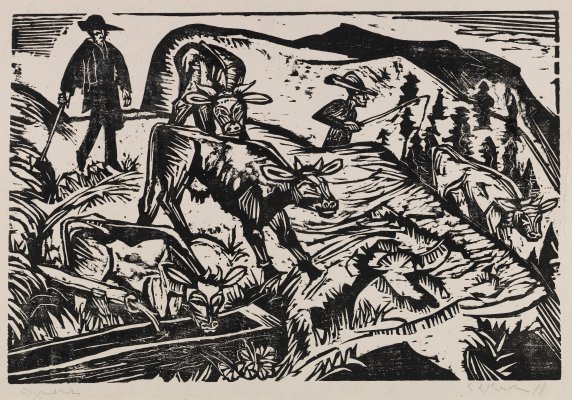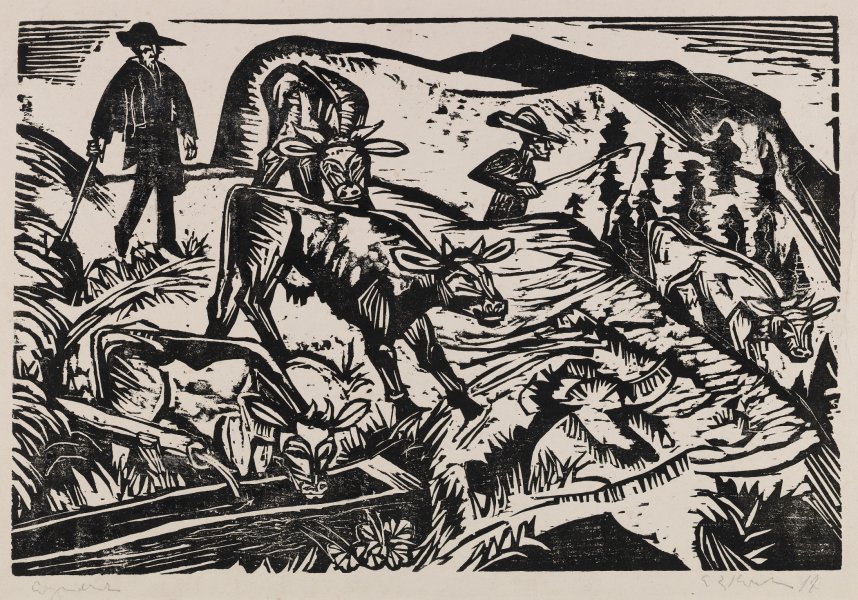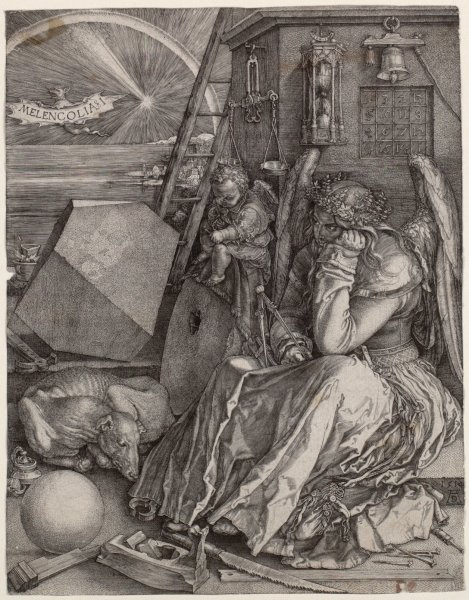Collective Identity: Expressionism to Realism and the Art of Printmaking in Germany
Wednesday, February 21, 2007–Sunday, May 27, 2007

Ernst Ludwig Kirchner (German, 1880-1938).Cows Descending, 1917. Woodcut, 16 5/8 x 23 1/8 inches (42.2 x 58.7 cm). Collection Albright-Knox Art Gallery. Gift of A. Conger Goodyear, by exchange, 1949. Charles Clifton Fund, 2003.
Albrecht Dürer, who is considered one of the greatest printmakers of all time, produced both woodcuts and engravings with a level of detail that is virtually unsurpassed. Dürer, among other German printmakers of the 16th century, was an enormous influence on early 20th century German artists who were concerned with such issues as the atrocities of war, death, the difficulty of city life, and man's relationship with nature during a period of social upheaval and uncertainty in pre– and post–World War I Germany. In an effort to explore mediums beyond traditional painting and sculpture, these artists revitalized the woodcut—as well as other printmaking techniques such as etching and lithography—with an aggressively unique sense of color, line, and form.
By reflecting back on a 400-year-old tradition of printmaking throughout Germany, this exhibition took a closer look at the medium of printmaking and how it formed a collective, national identity. This exhibition provided a historical context for this work by pairing 16th century German prints with their 20th century counterparts, including prints by Max Beckmann, Albrecht Dürer, George Grosz, Ernst Ludwig Kirchner, Käthe Kollwitz, and Emil Nolde.
This exhibition was organized by Associate Curator Holly E. Hughes.

